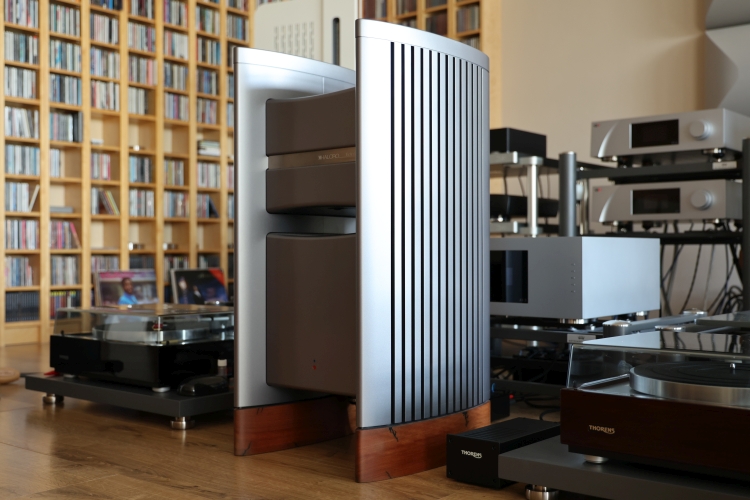
Review organized by Marc Loubeau / Prestige Audio Diffusion
Review sample kindly supplied by Terrason Audio
Retail prices in Europe, incl. VAT:
Eclipse Stereo €47.900 (powdercoated finish)
Eclipse Signature Stereo €55.900 (premium high quality painted finish) (as reviewed)
Halcro History
Halcro was the brainchild of Bruce Candy, a renowned physicist and inventor. He invented an audio power supply and amplifier topology that all but eliminated distortion. Halcro, which had become a subsidiary of Bruce’s metal detection business, Minelab Electronics, stunned the world with their first amplifier, which had distortion measured in parts per billion at full power.
Since Stereophile’s 2002 gushing review of the dm58, numerous awards and ultra-positive reviews soon followed, and Halcro grew into one of the world’s most respected hi-fi brands. Over the years, a series of improvements were made to the dm58, culminating in the dm88 monoblocks and the dm38 stereo amplifier. The family was later joined by the dm8 and dm10 preamplifiers and a foray into home theatre with the MC series of multichannel power amplifiers.
In 2008 Minelab was acquired by Codan, a large military communications company, because of the synergistic fit with their mine detection capability. Codan had no interest in Halcro, so the company was retained by the original shareholders and shelved. This was in part due to the fact that what Codan was really buying was Bruce Candy’s genius and Halcro was seen as a distraction for his time.
Halcro briefly licensed their products to be manufactured by Vivid Audio, but unfortunately, this ended with the onset of the Global Financial Crisis. Subsequently, the Halcro assets were mothballed and left in storage.
At some point, the owners of Magenta Audio, a specialist Australian Hi-Fi importer, became aware that Halcro was intact but lying dormant in a warehouse just on the other side of the city. Longwood Audio was founded by Magenta’s Dr Peter Foster, Mike Kirkham, and Halcro’s former lead engineer Lance Hewitt. Soon, a deal was negotiated to acquire all the assets of Halcro, including the brand, the considerable patent portfolio, stock and tooling. This brings us to the brand’s revival in 2023. The new Halcro team has spent the past couple of years exploring every aspect of the unique platform for possible improvements, which culminated in the new Eclipse power amplifier.
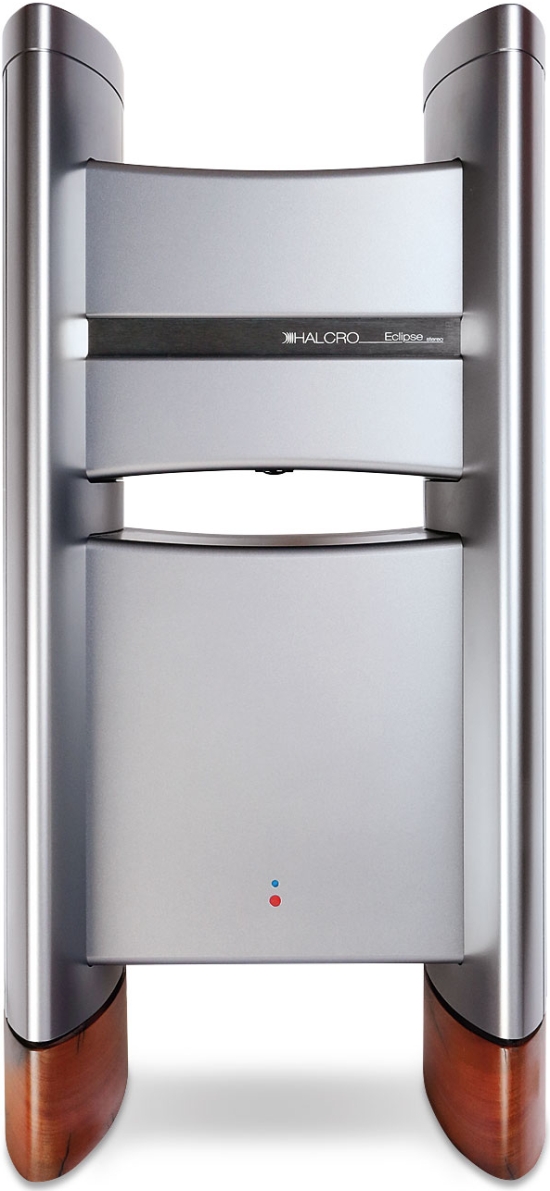
Eclipse Power Amplifiers
Available in both stereo and mono versions, the Eclipse power amplifier enjoys a completely redesigned input stage, further reducing non-linear effects and distortion. There are multiple independently tracking power supplies, superior internal shielding and a higher output power. The distinctive Halcro aesthetic is retained but is updated with smoother and gentler curves to offer a new, modern, ‘lighter’ take, which is said to contribute to even better performance as the new, machined-from-solid casework reduces microphonics.
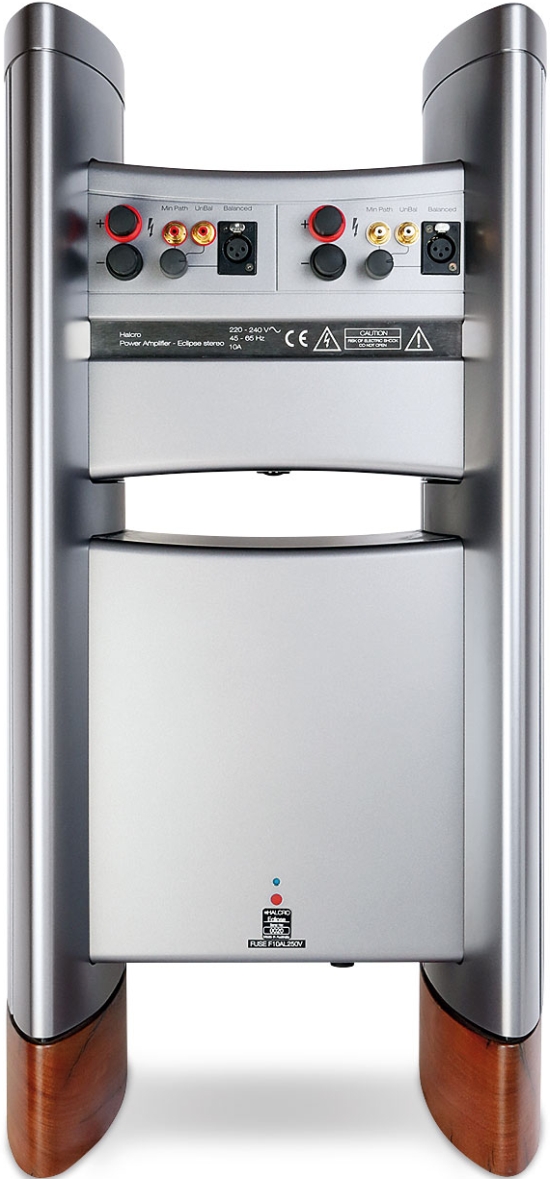
Halcro amplifiers are said to offer very precise imaging due to their unique ability to avoid adding ‘ghost’ notes that are thrown into the mix by the non-linear distortion of a conventional amplifier. Lack of distortion aside, one of the key aspects that defines Halcro amplifiers is the way they maintain the phase coherence of the signal source and thus the relative timing of various notes or tones within complex music.
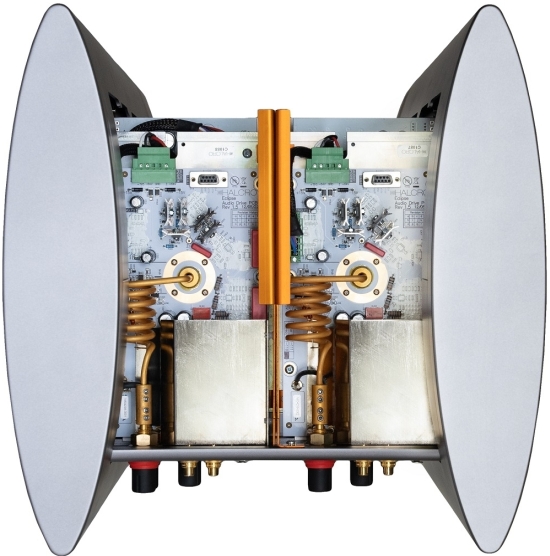
Technical Aspects
The Eclipse power amplifier is comprised of four heavily shielded individual compartments: a power supply unit, an input amplifier section, a power amplifier compartment, and an output filter compartment. These individual sections have all been located in ideal positions with the interconnecting cabling neatly located in the two side pillars that also function to disperse heat from the power amp section. One might expect such large “fins” to disperse a lot of heat but in practice, the amp only ever gets moderately warm to the touch, certainly never hot.
The precise Halcro schematics are a close-guarded secret. Key component markings have been removed and some boards are coated in epoxy to protect the intellectual property. But in essence, Halcro Power Amplifiers are Solid State Class AB FET designs with a specific two-stage PFC switchmode power supply. The power supply employs active power factor correction, which minimizes mains current harmonic distortion. It offers less than 100 parts per million mains hum and ripple on the amplifier power rails. The supply section has two variants: the 110V model operates from 100-120 Volts R.M.S, 45-65Hz, and the 240V model operates from 220-240 Volts R.M.S, 45-65Hz.
The first switched power supply buffers the amplifier from the AC power by generating a very high DC voltage, from which the second switched power supply delivers the rail voltages for the power amplifier. The power amp stage uses complementary FETs and a reasonably high quiescent current, and although no information is supplied regarding feedback, the output impedance is said to be vanishingly low. In and of themselves, these components may not seem all too radical. What makes the concept truly unique is the way the building blocks are put together, physically and electrically, using the Halcro-proprietary distortion compensation topology.
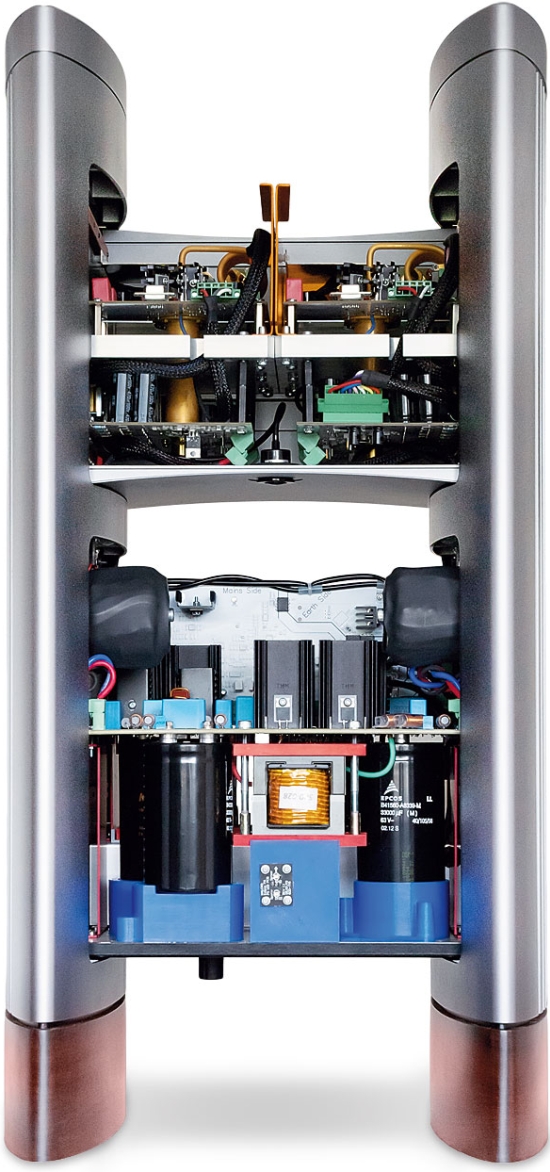
For reliability, all semiconductors in the power supply and amplifier are at least industrial grade, and all electrolytic capacitors are rated to 105°C. The critical audio path employs only highly linear resistors and MKP10/ FKP1 capacitors. Six-layer PCBs are used in the power amplifier to minimize stray magnetic fields and define voltages accurately. Four-layer PCBs are used in the power supply to minimize E.M.I. and voltage transients, which improves reliability and power efficiency.
The Frequency Response is 7Hz – 90kHz within -1dB and 3Hz – 215kHz within -3db. The maximum slew rate for both small signal and the maximum output voltage is 100V/μs, which is equivalent to a maximum output voltage at approximately 250 kHz.
To ensure trouble-free operation under any circumstances, the Eclipse amplifier is exceptionally well-protected. The power supply is protected against most mains transients. It will cut out if common faults are detected, such as over-voltage, master clock at incorrect frequency, or excessive temperatures. The power amplifier section is short-circuit proof and protected against most input overloads. It has over-current limiting and protection against overheating. It will cut out if a continuous DC offset appears on output or if the output current continuously exceeds 12 A average over a period of a few minutes. The latter may seem like a compromise, but Halcro has rigorously tested this and confirmed that this condition never occurs in normal music reproduction. Hence, it poses no limitations.
Next: Eclipse Stereo/Mono differences, Finish, Future Products, System Context
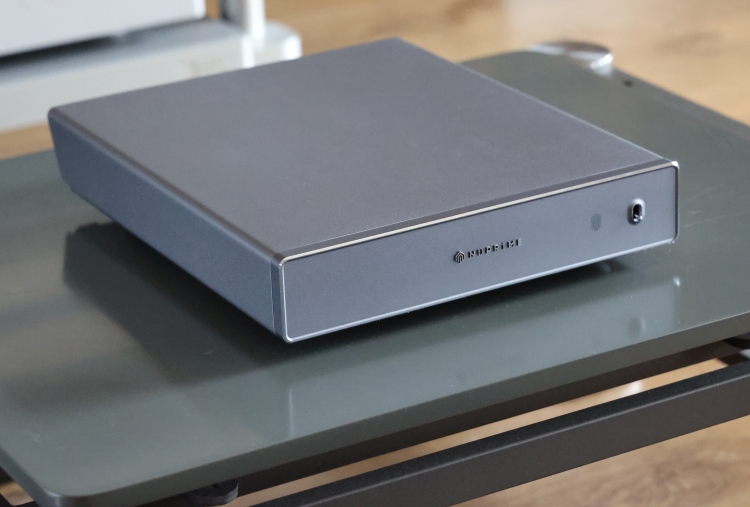
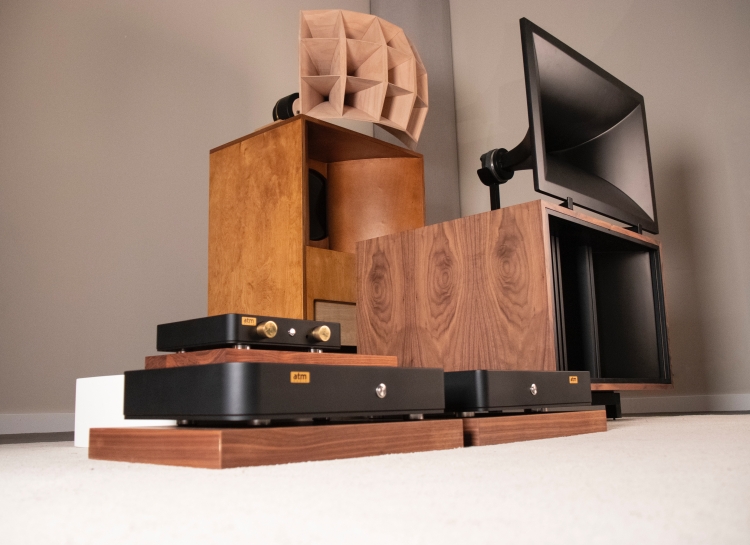
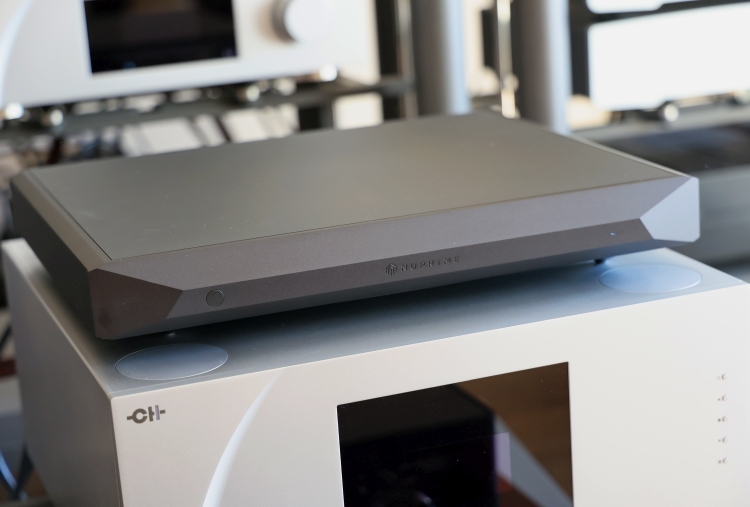
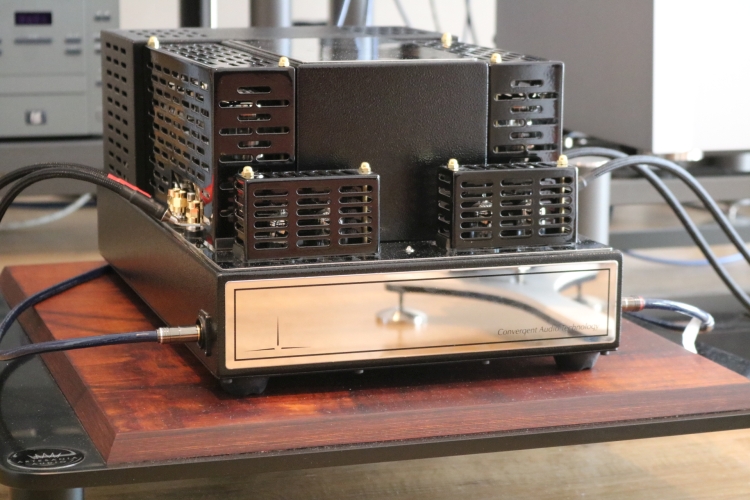
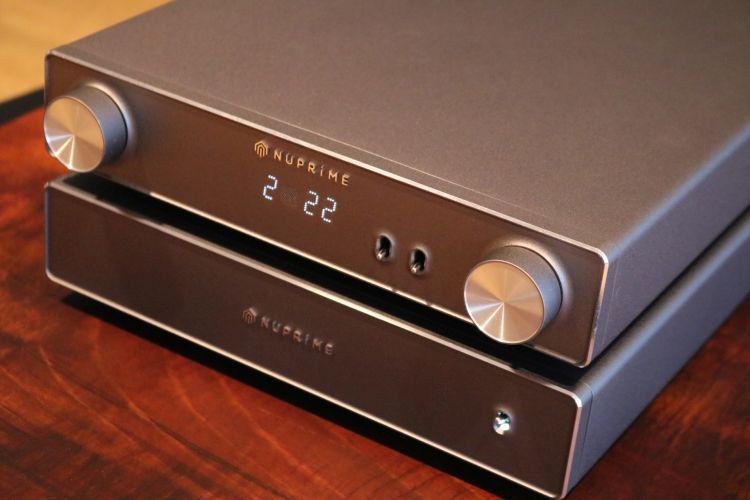
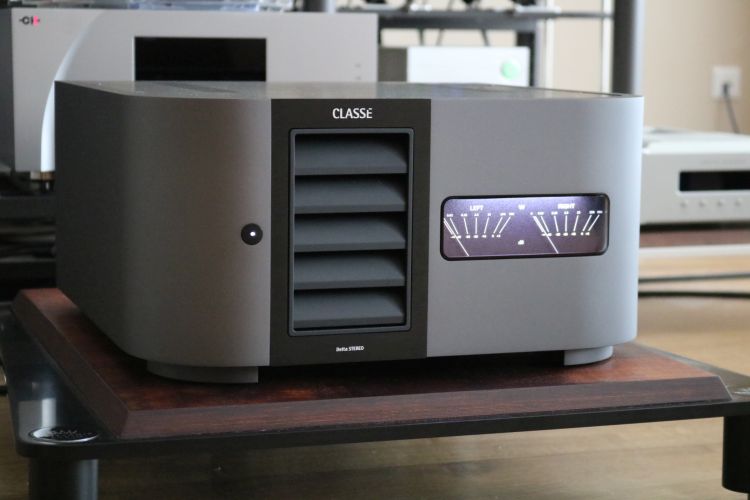
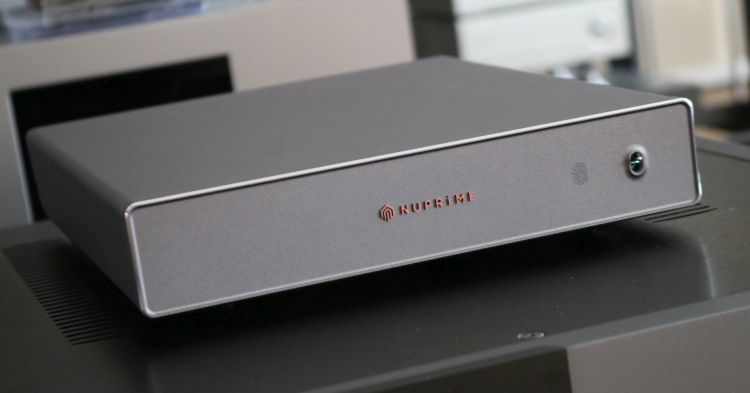
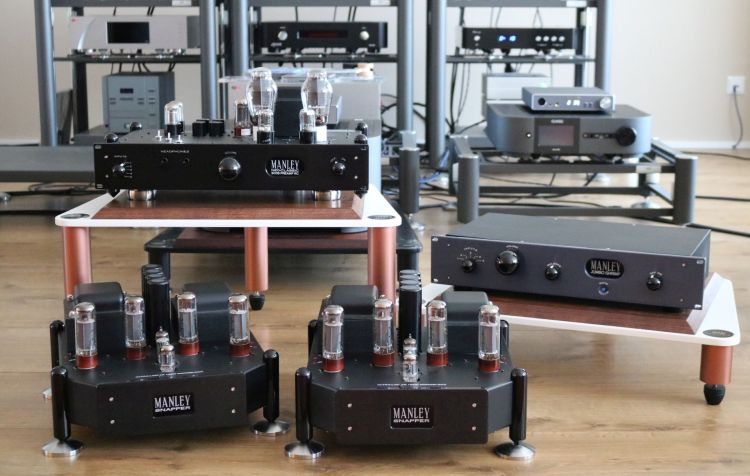
Halcro may claim that the current limitation on the amplifier has no effect in real life, but my experience is the contrary: current limited amplifiers do not drive “impedance challenged” loudspeakers very well. I confirmed this by listening to the original Halcro DM58 monoblocks many years ago trying to drive the original Sonus Faber Extremas, and not succeeding very well, over a period of two weeks in my system at that time. HiFi News May 2023 reviewed the new Halcro Eclipse, and confirmed a maximum current of only 10.4 Amperes. In my experience, a top of the line modern monoblock with pretensions to be able to drive difficult speakers (and let’s face it, many of the top models today are difficult to drive) should be able to output a maximum current of at least 50 – 60 Amperes. I note as an aside that even the integrated amplifier Musical Fidelity Nu Vista 800.2 (tested by HiFi News August 2023) is capable of outputting 46.9 Amperes.
Fascinating review thanks Christian. I remember reading about Halcro way back when nice to get the whole story.
Hi Christiaan, ever considered reviewing one of the Pilium amps?
Good suggestion! I got interested in these amplifiers after hearing the combination with the Magico S3s last year in Munich where it seemed like a great pairing. I was actually considering looking into reviewing them but other work got in the way. I guess I’ll have a chat with the local distributor to see if we can organize a review.
I just heard the Halcro driving a pair of Estelon X Diamond MK II’s to highly realistic levels. The Estelons definitely require a very firm grip and I can confirm that the Halcro did not only sound jaw-droppingly good, but also drove these demanding speakers incredibly well, with total control even on complicated tracks with huge dynamic range. This amplifier is an absolute winner. I can only begin to imagine what two of them can do …
In Munich, I heard what the pair can do, combined with the new Equinox preamp and the new Marten Coltrane Quintets, adn it is quite the match made in heaven! You can read more about this in the Munich High End 2024 Show Highlights that I published today.